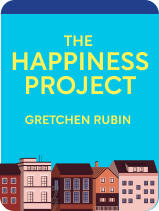

This article is an excerpt from the Shortform book guide to "The Happiness Project" by Gretchen Rubin. Shortform has the world's best summaries and analyses of books you should be reading.
Like this article? Sign up for a free trial here .
What exactly is mindfulness? Can you cultivate mindfulness without meditating?
Mindfulness is a state of mind in which you are fully aware and engaged with the present moment. While meditation is the most direct way to enter this state, there are other ways to cultivate mindfulness.
Here are some other things you can do to cultivate mindfulness without meditating.
The Benefits of Mindfulness
Cultivating mindfulness can boost your happiness in three significant ways.
- Being present helps you better appreciate what you have. Additionally, a deeper awareness of the present makes it more vivid.
- Mindfulness can help you break bad habits that are the source of unhappy feelings such as guilt or resentment.
- Mindfulness can elevate mood by lowering your stress levels, making you less defensive, and engaging you more with the people and events around you.
One of the most well-known ways to cultivate mindfulness is meditation—and while this may work for you, there are other things you can do to become more mindful.
Question Your World
Asking questions about the world around you and the world you’ve constructed in your mind interrupts the automatic thought processes that cause you to pass through life disengaged.
Question the World Around You: Ponder Paradoxes
The first way to get your mind working in new ways is to contemplate questions and ideas that logic can’t answer. Buddhist monks call these questions koans, and they contemplate them as a way to stop relying on reason and logic in the journey toward enlightenment.
While pondering life’s paradoxes won’t help you achieve enlightenment, it will help you think in new, imaginative ways that help you look at your world with a bit more curiosity and flexibility of logic. In quiet moments, dedicate yourself to finding questions and phrases that you can’t use reasoning and logic to answer: What is the sound of one hand clapping? If a tree falls in the forest and no one is around to hear it, does it make a sound?
Question the World You’ve Constructed: The Rules You Live By
The second way to get your mind working in a new way is to rethink the “rules” you’ve adopted in your life. These rules are called heuristics—we use them as back-of-the-mind guidelines to help us quickly make decisions and find solutions to problems. Often, we don’t question our rules because we believe they’re inherently true. A good way to cultivate mindfulness and “wake up” in your life is to occasionally examine the rules you’ve set for yourself.
This is an important exercise because it grants you a deeper understanding of how you might unconsciously be pushing yourself away from happiness. Instead of acting on autopilot and applying your rules indiscriminately, this reflection lets you take a moment to remember your values and goals and ensure your thoughts and intentions are aligned.
Examine the rules that you unthinkingly apply to your life. For example, “My children are my first priority,” “Never go to bed angry,” “Better safe than sorry,” and so on. Ask yourself: Are they true? Are they helpful? Are they creating unhappiness? Discarding the rules that don’t work in line with your values and goals is helpful for several reasons.
- Your rules can mislead you, causing you to draw conclusions that don’t make sense, are unlikely, or unnecessarily create negative emotions. For example, one of your rules might be, “Dogs are dangerous” because you once saw a news story about a dog attack. A dog attack is unlikely, but your rule keeps you in a state of unnecessary fear.
- Some rules may have worked for your happiness before, but no longer work for you. For example, “Do whatever makes for the better story” may have been a great rule to live by in your early 20s, but now it doesn’t make sense for you. You’ll be happier with making more responsible decisions that will help build the stable life you’re now looking for.
- You’ll find that some of your rules are contradictory. For example, one of your rules might be, “If it makes you happy, buy it,” while another is, “Don’t make unnecessary purchases.” Once you see the contradiction, you can make a new rule that compromises between the two.
Change Your Mind by Changing Your Behaviors
Another way of cultivating mindfulness is to introduce practices and behaviors that are specifically aimed at helping you engage with and become more aware of the world around you.
Awaken Dormant Parts of Your Mind
Taking part in activities that make your brain work in new, unusual ways stops you from living on autopilot and forces you to become more aware of your surroundings. There are a couple of ways you could add these “wake-up calls” to your day.
Wake-Up Call #1: Create physical reminders of your goals.
Each time you encounter one of your reminders, you’ll be prompted to reflect on your ambitions and how you’re working toward them. For example, you can put up your resolutions on sticky notes around your house to keep your goals top of mind.
Wake-Up Call #2: Try a new way of thinking about your habits.
Reflecting on your habits can take any form—perhaps you perform a daily recitation of your habits to break, start a journal of your habits and desires to break them, or mediate with a recording.
Wake-Up Call #3: Try a new activity.
Get involved in things outside the scope of your everyday activities—for example, a writer might try painting instead of journaling, or a photographer might try writing. This step is especially effective if you get involved in something you know you enjoy, but haven’t participated in for a long time—this wakes up a dormant part of your mind. There are two awareness-boosting benefits of this exercise.
- First, because this activity is far from the work you’re used to, you likely won’t be good at it and can’t expect a productive or lucrative outcome. This helps you develop a sense of non-judgmental awareness—that is, the ability to be fully engaged in the moment without criticism.
- Second, new activities get you outside your normal schedule and often into a new neighborhood among new people. This disrupts your “autopilot” self, promoting you to look at the world a bit differently and within the context of new experiences. This makes the present moment more vivid and engages you fully within it.

———End of Preview———
Like what you just read? Read the rest of the world's best book summary and analysis of Gretchen Rubin's "The Happiness Project" at Shortform .
Here's what you'll find in our full The Happiness Project summary :
- How to increase the overall happiness in your daily life
- Why changing everything won't bring you happiness
- How to create your own year-long happiness project






